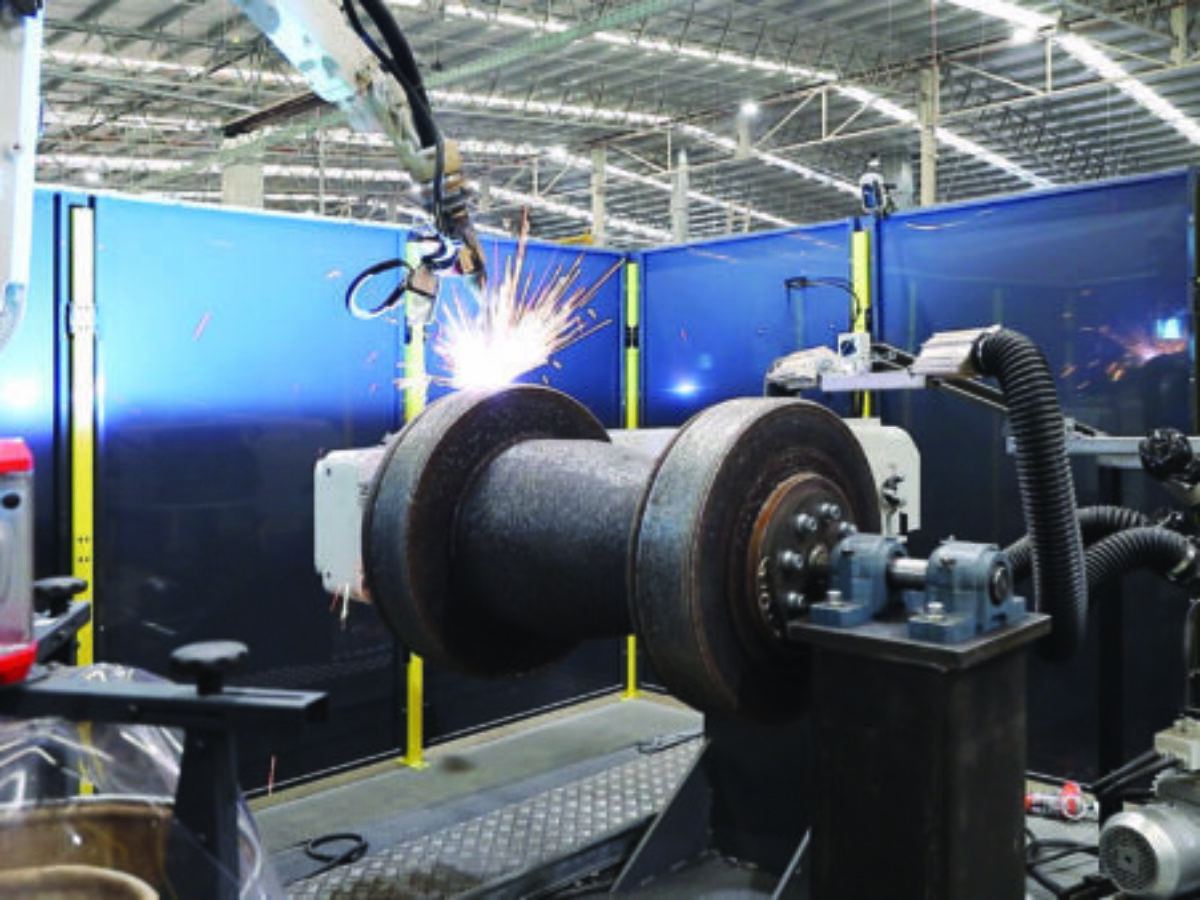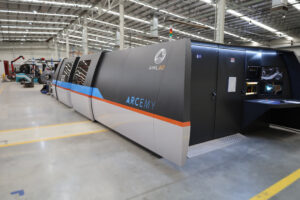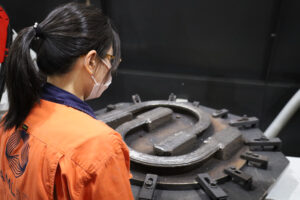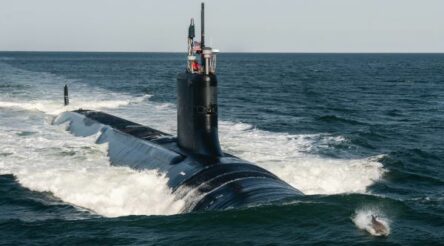Frontiers in additive manufacturing: Saving supply chains with WAM

ADVERTISING FEATURE
Australian-based Additive Manufacturing or 3D printing technologies can solve some of these significant challenges, especially for industrial and large-scale parts supply, AML3D explains in this edition of our Frontiers in additive manufacturing series.
The world has changed. The last three years have seen a level of disruption to supply chains and an ensuing impact on manufacturing not seen for generations. The COVID-19 Pandemic and more recent geopolitical uncertainty have resulted in the manufacturing, defence and technology industries sourcing materials and products locally to reduce the risk of supply constraints.
Procurement and supply chain management have had to rapidly reassess and pivot to new and reliable sources of supply, ensure greater resilience in supply chains, and reduce excessively large and capital-intensive inventories that are also costly to maintain.
Australian-based Additive Manufacturing or 3D printing technologies can solve some of these significant challenges, especially for industrial and large-scale parts supply. According to the American Society for Testing and Materials (ASTM), seven Additive Manufacturing technology categories are perfectly suited for use in manufacturing. Each category has multiple industry processes, varying based on the materials used and the machine technology for production.

AML3D’s ARCEMY®, large-scale industrial Wire Additive Manufacturing (WAM®) system.
There are currently 18 metal Metal Additive Manufacturing technologies available for manufacturing. Assessing the appropriate technology for manufacturing depends on the part or component size, the material required and relevant industry standards and certification requirements.
In Australia, large-scale metal 3D printing capability is led by AML3D Limited. With its technology centre located in Adelaide, South Australia, the AML3D team is at the forefront of large-scale metal 3D printing using its patented Wire Additive Manufacturing (WAM®) process, driving massive disruptive change to the industrial part supply chain.
AML3D customers in Aerospace, Defence, Manufacturing, Mining and Oil & Gas are experiencing superior gains, combating the challenging lead times of traditional manufacturing by engaging in wire additive manufacturing.
Recently highlighted to AML3D by interactions with various hydrocarbon tier-one customers are the advantages of WAM® technology over traditional manufacturing; lead time is a hot topic addressed regarding supply chain constraints often placed upon high-value critical parts.
Lead time reduction has a positive impact on business operations. With no shortage of high-quality certified wire feedstock, the delays often seen with sourcing billets or tooling for casting are negated, with local manufacturing locally sweetening the deal.
Additionally, the just-in-time print bureau ̶ contract manufacturing ̶ service frees up capital, allowing the business to minimise inventory while ensuring that plant or operational maintenance and sustainment programs are managed efficiently and effectively.
Lead time savings are not the only savings experienced using additive manufacturing technologies such as WAM®. Cost savings, both economic and ecological, are also experienced.
Direct costs relating to materials, labour and overhead are challenging the manufacturing industry across the board. The increasing cost of materials and plant operations, including rent and electricity, is forcing organisations to consider their entire value chain; incidentally, this provides an opportunity for large-scale metal 3D printing in the supply chain.
One example is a project AML3D delivered for a Queensland-based customer in late 2021. The customer approached AML3D after experiencing a four times increase in manufacturing a lifting device. With the need to replace a minimum of six units per annum, the customer sought an alternative cost-competitive path forward. Wire additive manufacturing provided a shorter lead time, but in this situation, the technology could also provide economic savings by fabricating the lifting shackles on par with pre-COVID pricing.
Cost savings are also experienced with expensive and exotic materials such as Titanium, INVAR and Nickel alloys.

AML3D’s Materials and Production Engineer visually inspects a WAM-printed lifting device for heavy industry.
All additive manufacturing technologies experience reductions in buy-to-fly ratios. Wire additive manufacturing uses less material due to its near-net process. In an internal case study, to see how far material waste savings could be pushed, AML3D produced a custom 316 stainless steel propeller that resulted in 95% material waste savings compared to machining from billet.
Leaner manufacturing is achieved by reducing physical material inputs and the energy required to manufacture a single part. For example, when printing a part with ER70S, mild carbon steel, with AML3D’s robotic welding technology, approximately 9 kW is used while welding, consuming 1.7 kWh* per kg of printed metal, putting the WAM® process ahead of casting techniques. In comparison, a typical cast steel product uses about 2.75 kWh per kg.
Quality is the next topic raised after learning that WAM provides positive ecological and economic reductions. Is there a sacrifice of quality? No. The porosity issues often seen within casting are nullified with the additive metal layering of molten wire. With a range of parameters that can be managed, including the rate at which a layer is deposited, many quality challenges experienced within casting are not observed. Additionally, material properties are often improved by controlling interpass temperatures and the heat treatment processes that occur with management.
For disrupted supply chains, additive manufacturing provides an increasingly valuable alternative to traditional manufacturing.
No longer is additive manufacturing technology just for prototyping small components. Thanks to additive manufacturing companies like AML3D, continuous and repeatable production for large-scale and exotic metal parts is available. Additive manufacturing allows organisations to access — and manufacturers to provide — better performing parts faster, leaner and greener than alternatives. Wire Additive Manufacturing technology offers the capability for manufacturing to be flexible and reactive to demand, ensuring capital is not tied up in inventory.
It all starts with understanding what the heaviest impact on your supply chain is.
Main picture: The world’s largest metal 3D printed high-pressure part for the oil and gas industry was made using AML3D’s wire additive manufacturing process
*Excludes cradle to gate calculations for the production of the wire feedstock or the energy required to manufacture componentry featured in AML3D’s ARCEMY® metal 3D printing systems. For this article, a boundary has been set around assessing life cycle inventory.
![]() Frontiers In Additive Manufacturing is brought to you through the support of VSF Large Area 3D Printers by CNC Designs.
Frontiers In Additive Manufacturing is brought to you through the support of VSF Large Area 3D Printers by CNC Designs.
Subscribe to our free @AuManufacturing newsletter here.
Topics Manufacturing News Technology
@aumanufacturing Sections
Analysis and Commentary Awards Defence Manufacturing News Podcast Technology Videos










